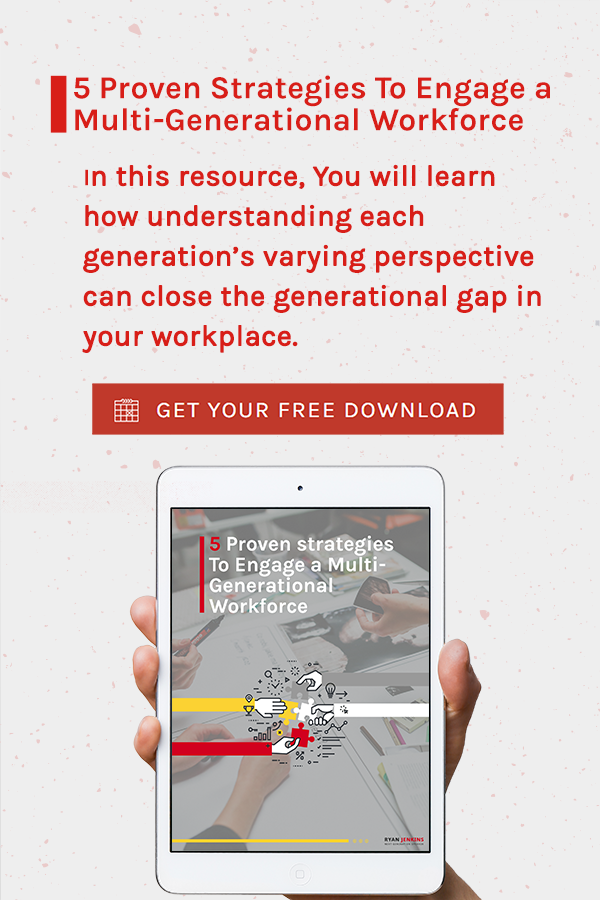Here is how you can successfully manage remote Millennial workers.

The Demand for Remote Working
According to the 2016 Global Workplace Analytics Telecommuting Statistics…
- Fifty percent of U.S. workforce holds a job that is compatible with at least partial telework and approximately 20-25 percent of the workforce teleworks at some frequency.
- Eighty to 90 percent of the U.S. workforce says they would like to telework at least part time.
- Fifty to 60 percent of the time workers are not at their desk. Fortune 1000 companies are entirely revamping their space for mobile employees.
- Seventy-five percent of employees who work from home earn over $65,000 per year, putting them in the upper 80th percentile of all employees, home or office-based.
According to a 2016 FlexJobs survey, Millennials show a stronger preference for working at a coffee shop, co-working space, library, or other place besides the office than other generations. Yet Millennials report having to stay at the office to do work at a much higher rate.
It’s abundantly clear that there is a shift towards more remote based work, especially with Millennials. Are you prepared to manage across timezones, generations, and cyberspace?
11 Tips for Managing Remote Millennial Workers
1. Hire Right
The best way to set yourself up for success when it comes to managing a remote team is to hire the right and best talent for the job. In Chapter XXX we cover all the necessary details to hire great remote Millennial employees.
2. Outline Expectations
One of the benefits of a remote team is that employees can be reviewed and rewarded based on performance (output) rather than attendance (input). This dynamic makes the buy-in of the expectations easier for the remote team.
Because remote work is less structured than on-site work, clear expectations are critical. Make the following clear with your remote team.
- Company mission and vision
- Expected number of working hours per day and week
- Key performance indicators (KPIs)
- Weekly, monthly, and yearly goals
- Communication cadence (how often does communication need to happen)
- Tools and resources to be used
- Which tasks or projects they own
- Who and when to contact for help/support
- Management availability (when, where, and how to be reached)
- Team availability (when, where, and how to be reached)
Remote working works best when there are clear expectations and trust. Clearly outline the expectations and offer the necessary autonomy and trust for Millennials to execute.
3. Connect Consistently
When working with remote teams, if you’re not connecting consistently, days will turn into weeks and weeks into months, and before you know it you have an isolated team that is disconnected from the organization’s goals and mission.
In the absence of consistent communication, research shows that Millennials react more negatively than previous generations.
Schedule predictable, reoccurring, and agreed-upon meetings. It’s also important to make check-ins more conversational than the daily project updates or briefings you might conduct over email or chat. This will help to build rapport and keep communication open.
In the Harvard Business Review article, How to Manage Remote Direct Reports, Mark Mortensen, an associate professor of Organization Behavior at INSEAD, recommends visiting remote employees regularly especially in the early stages. “If you can get yourself to their location when you first start working together, that’s invaluable,” Mortensen says. “Seeing people one-on-one, face-to-face sets the tone and gives people a sense of comfort.” As the arrangement stabilizes, “predictability is more important than a particular frequency,” Mortensen says. “If your direct report knows you’re there every six months, it helps build trust.”
Consider having a designated hour each day or once a week where the whole team is expected to be online working at the same time regardless of time zones (if possible). This allows the team to collaborate or help each other out in a unified and predictable way.
Lastly, an “open door policy” doesn’t work for a remote team. Instead remote managers might consider an "open status policy" where they keep their online status (busy, away, available, etc.) accurate so that remote employees know when they can connect with you.
4. Communicate Strategically and Transparently
When communicating with remote employees, every communication has to be used strategically, delivered transparently, and sent via the right channel.
Here is a quick guide for how to use today's primary communication channels.
- Email: exchanging objective and brief information.
- Chat: announcements, general news, team conversation, informal conversing, and socializing.
- Skype (video): detailed, focused, feedback-rich, long, emotional or difficult conversations.
- Phone: detailed, long, emotional or difficult conversations. (Phone should be the last resort if video chat is unavailable.)
Ensure transparency throughout your communications. The more informed the remote team is, the easier it is for them to be productive and autonomous. Create transparency with how and where information can be accessed. Making the same information available and easily accessible allows the team to function as a single unit. Google Docs, Dropbox, or other file-sharing services can be leverage to streamline and consolidate the consumption and sharing of important information across the remote team.
5. Track Proactively
As remote workers, Millennials are seeking autonomy and independence so giving them the responsibility to track and measure progress is empowering for them.
Invest in the right software and technology to track progress effectively. Time trackers (such as HubStaff, When I Work or Time Doctor) help to boost accountability and allow for easy tracking of the time worked. Employees can also share screencasts (image or video recording of a computer screen) of their completed or pending projects for managers to review. It’s often easier to communicate this way then in writing. Also consider task management and activity tracking tools IDoneThis and Asana to review what the team and individuals are accomplishing.
Be sure to apply the same metrics to the entire team. Remote Millennial workers will want to know they are not being treated or tracked differently.
6. Monitor Well-Being
Remote workers can have a harder time setting boundaries between work and personal. Many managers fear that the independence of a remote worker will lead to laziness and slacking off. David Heinemeier Hansson, New York Times Bestselling author of Remote: Office Not Required, says, "the greater danger is for [remote] employees to overwork themselves and burn out. It’s the manager's responsibility to guard against this outcome.”
Ensure employees are maintaining work-life harmony and taking the appropriate time for themselves. Consider using a tool like CultureAmp to stay ahead of employee satisfaction and engagement. CultureAmp enables new hire surveys, onboarding, employee engagement surveys, single-question polls, and more all delivered via web or mobile to satisfy the savvy Millennial worker.
7. Cast Vision
Remote managers who fail to connect remote workers efforts with the big picture, risk employees feeling unimportant and isolated.
Consistently map the work of the remote employees with the organization’s objectives. Vision leaks inside every organization so make it a priority to routinely communicate the “why” of the organization and team. A compelling and clearly defined vision also helps a remote team to establish common ground with each other over the shared vision.
Mapping the business progress to individual tasks and team effort is key to motivating remote Millennial workers.
8. Prioritize Face-to-Face Meet-ups
KISSmetrics holds an annual summit for it’s remote workers, Buffer's remote employees get together for retreats every five months, and Automattic gets their entire 400-person company together every year for a “grand meet-up” in a beautiful location.
These companies have discovered a secret to cultivating culture among remote workers…face-to-face meet-ups. The face-to-face meetings create opportunities for employees to bond, build trust, relationship build, and have fun. All core to building enduring company culture.
Use the money you save on office space and prioritize face-to-face meet-ups because putting a face to the name at the end of an email or a personality behind the Slack/Skype profile goes a long way.
9. Cultivate Culture Remotely
Face-to-face meet-ups are a great way to jump-start company culture among remote workers. But to maintain that culture the rest of year takes some intention planning. Here are three ways to cultivate culture remotely.
1. Create a digital watercooler.
Watercooler talk (random and non-work-related conversation) is nonexistent with a remote team. However, there are ways to cultivate the healthy aspects of watercooler talk (spreading of ideas, team camaraderie and bonding, fun (non-gossipy) chatter, etc.) with a remote team.
Chat services like Slack, HipChat, or Basecamp are ideal for creating “channels” where watercooler talk can happen. Create a fun channel—essential a chat room focused on a specific topic—such as #random, #laugh-out-loud, #Netflix-binge-watchers, or #watercooler to create a place where the team can let off steam while bonding and building rapport with one another.
2. Knowledge share.
Encouraging remote employees to share their knowledge is a great way to cultivate culture. Knowledge sharing sessions could be work related or not…the more personal or abstract the knowledge the more fun for Millennials.
Leaders should also consider hosting a reoccurring town hall meeting where the status of the company, pending and upcoming decisions, recent changes, financial updates, and so forth are discussed. Some organizations have had success cultivating company culture remotely by hosting monthly “no question is off limits” Q&As where remote workers can ask anything and get honest, transparent answers.
3. Send recognition.
Consider using gifs (short looping videos from giphy.com for example) when using a chat service like Slack to celebrate wins and convey greater emotion and excitement among your remote Millennial workers. If a picture is worth a 1,000 words, then a gif must be worth 2,000 words. It’s powerful, productive, and great for cultivating culture remotely.
Tango Card is a Slack integration that allows employees to send e-gift cards (such as Amazon Gift Cards) to teammates directly in Slack. Per-reward maximums and other parameters can be set to ensure the tools isn’t abused. Overall it’s a sleek and innovative way to boost morale and cultivate culture with your remote Millennial workers.
10. Share Company Swag
Because remote workers aren’t enter a building where the lobby and hallways are decked out with company logos and motivational company tag lines, it’s easier for remote workers to feel disconnected from the company brand.
Sending company swag (t-shirts, phone cases, coffee cups, etc.) to your remote team can help to keep them connected to the company brand. Consider sending the swag to the remote worker’s entire family since they are essentially sharing the same “office” at times.
11. Leverage Technology
Today’s tech tools have made it easier than ever before to collaborate and communicate with a remote team. It’s highly likely that if you’re managing a remote Millennial team, they will be very digitally savvy and highly interested in leveraging technology to work smarter, faster, and better. Below are some powerful tools to leverage with your Millennial team.
Consider Ryan Jenkins to be your next Millennial or Generation Z keynote speaker by clicking here...
![]()





